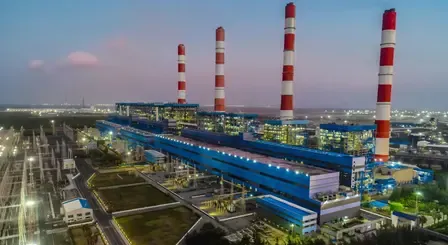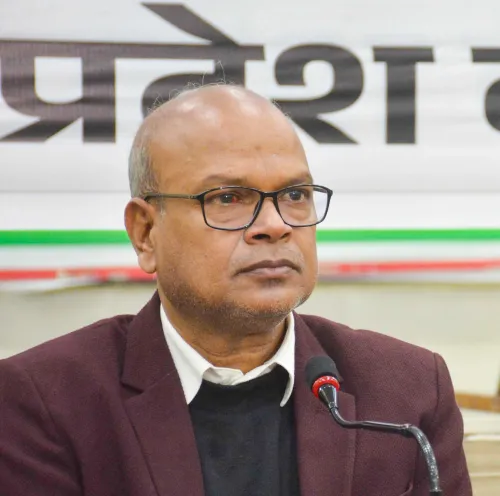Will Adani's Rs 30,000 crore Bhagalpur power project transform Bihar's economy?

Synopsis
Key Takeaways
- Investment: Rs 30,000 crore by Adani Group.
- Capacity: 2,400 MW to be added to Bihar’s power grid.
- Job Creation: Millions of jobs expected in various sectors.
- Transparency: The project model emphasizes responsible investment.
- Growth Potential: Unlocks opportunities in manufacturing and logistics.
Ahmedabad/New Delhi, Nov 7 (NationPress) The ambitious 2,400 MW Bhagalpur Power Project, initiated by the Adani Group with an investment of Rs 30,000 crore, signifies a pivotal moment in Bihar's economic landscape — addressing its energy void, revitalizing industrial activity, and generating opportunities for its 13.5 crore residents.
For the first time in many years, the state is experiencing a significant influx of private investment.
Historically, Bihar has remained on the periphery of India’s industrial narrative for over fifty years. Despite its demographic potential and strategic positioning, the state has faced challenges in attracting private investments and developing a robust industrial framework.
The statistics reveal a stark reality: Bihar’s per capita GDP is merely $776, while its per capita power consumption — 317 kilowatt hours (kWh) — ranks the lowest among major Indian states.
By comparison, Gujarat boasts a per capita consumption exceeding 1,980 kWh and a GDP per capita of $3,917.
This disparity is no coincidence. Electricity and economic growth are intertwined. Reliable power supply fosters industrial growth, job creation, and increased incomes.
In the absence of it, human potential often seeks opportunities elsewhere — Bihar currently sends nearly 34 million workers to other states; its youth are compelled to look for work outside due to the lack of a thriving local industry.
In this context, the Bhagalpur (Pirpainti) Power Project, with the Adani Group's commitment of Rs 30,000 crore, holds immense historical significance. It represents Bihar’s chance to integrate into India’s growth trajectory and finally secure its share of industrial advancement.
For half a century, private industrial undertakings have been scarce in Bihar. Over the past five years, the state has seen minimal large-scale projects. The agricultural sector continues to dominate, with nearly 50% of the workforce engaged in farming, forestry, or fishing, while only 5.7% are involved in manufacturing.
The 2,400 MW Bhagalpur Power Project, initially envisioned by the Bihar State Power Generation Company Ltd (BSPGCL) in 2012, was revitalized by the government in 2024 through a transparent e-bidding process after prior attempts fell short.
Four reputable bidders — Adani Power, Torrent Power, Lalitpur Power Generation, and JSW Energy — competed, with Adani Power securing the lowest bid at Rs 6.075 per kWh, a rate lower than similar bids in Madhya Pradesh (Rs 6.22–Rs 6.30 per kWh).
Importantly, no land transfer occurred. The land, acquired over ten years ago for this project, remains under the complete ownership of the Bihar government, leased at a nominal fee under the Bihar Industrial Investment Promotion Policy 2025. Post-project, it reverts automatically to the state.
In a time when investor confidence hinges on transparency and governance, the Bhagalpur model emerges as an exemplar of responsible investment — harmonizing public ownership with private efficiency.
Demand for electricity in Bihar has surged sharply in recent years, yet supply has not kept up. The state’s installed generation capacity of approximately 6,000 MW falls short of its peak demand of 8,908 MW (FY25), necessitating power imports from the national grid.
The Central Electricity Authority (CEA) projects that demand will nearly double to 17,097 MW by FY35. Without new generation projects, the state risks further widening its energy gap — hindering industrial growth, diminishing job creation, and stymieing overall economic advancement.
The Bhagalpur project is poised to address this crucial energy shortfall. By contributing 2,400 MW to Bihar’s grid, it will satisfy nearly one-fourth of the state’s anticipated additional power requirements over the next decade, according to insiders.
Furthermore, investments of this scale lead to extensive job creation. As infrastructure expert V. Suresh points out, every Rs 1 crore allocated to infrastructure generates 200–250 man-years of employment across various trades.
By this measure, the Bhagalpur project could yield millions of man-days of work — providing Bihar’s unskilled and semi-skilled workers with local employment opportunities in construction, logistics, operations, and related sectors.
According to knowledgeable sources, a dependable power supply will also pave the way for downstream industries, expansion of manufacturing areas, and the establishment of logistics and transport corridors — unlocking Bihar’s potential in food processing, textiles, engineering, and MSMEs.
Bihar’s challenge has never been its population — it has always been its power supply. The Bhagalpur project marks a significant turning point in the state's developmental journey: transitioning from subsidy-dependent survival to investment-driven growth. It embodies what Bihar requires most — trust from credible investors, scalable infrastructure, and empowering energy.
For too long, Bihar’s youth have migrated to illuminate factories and cities in other states. The Bhagalpur project could finally initiate a reversal of this trend — restoring power, purpose, and prosperity to their rightful place.










